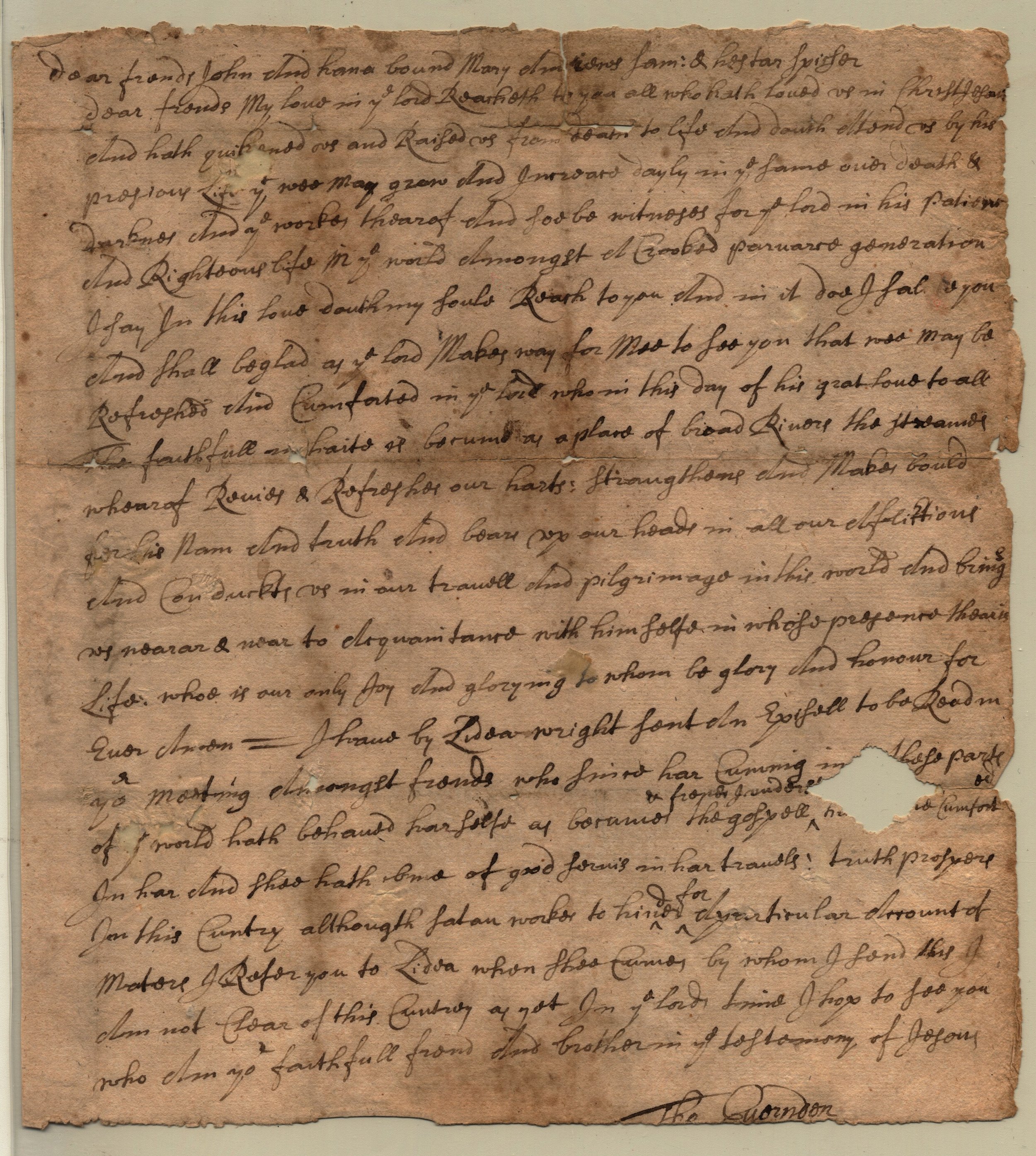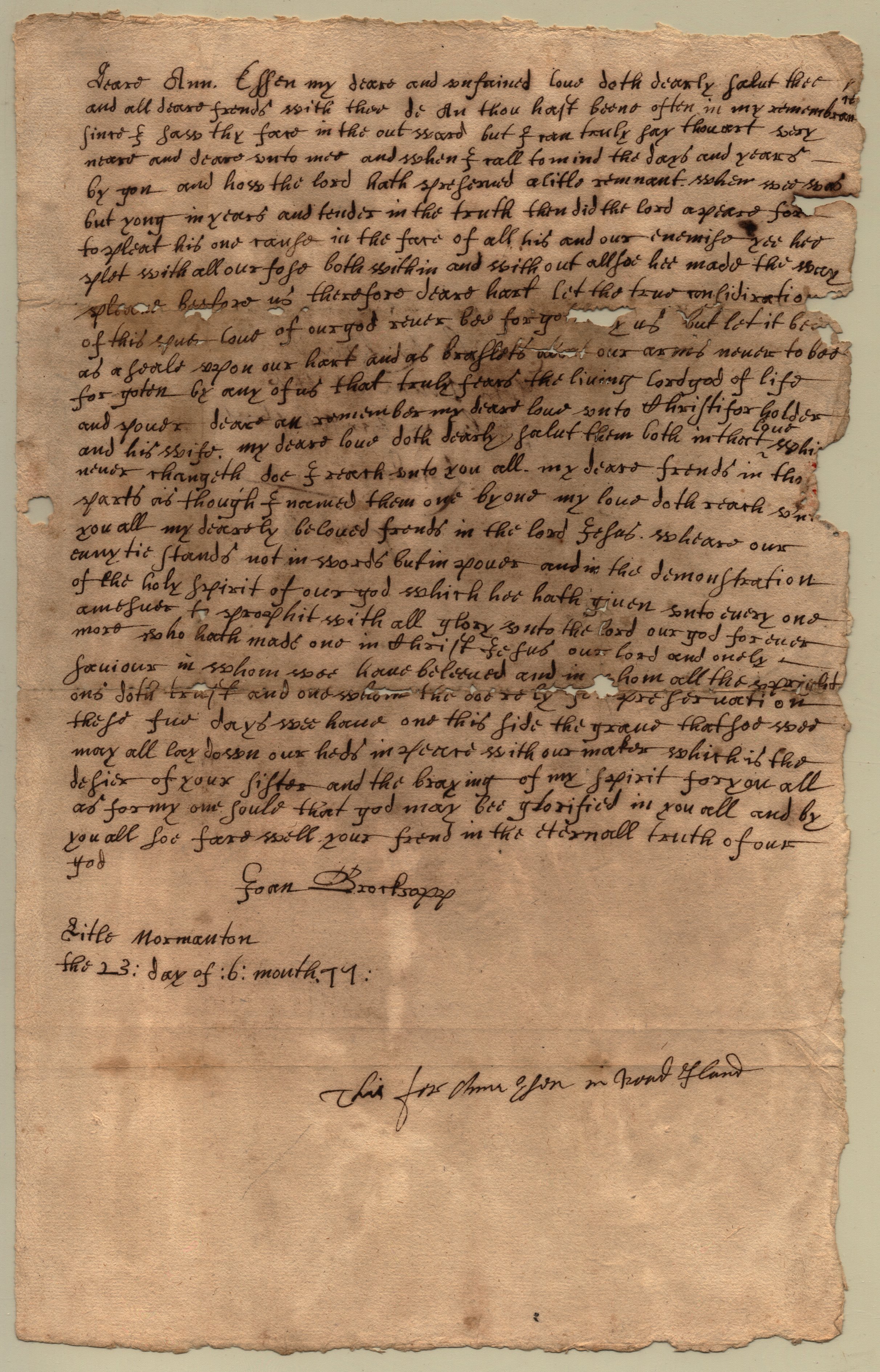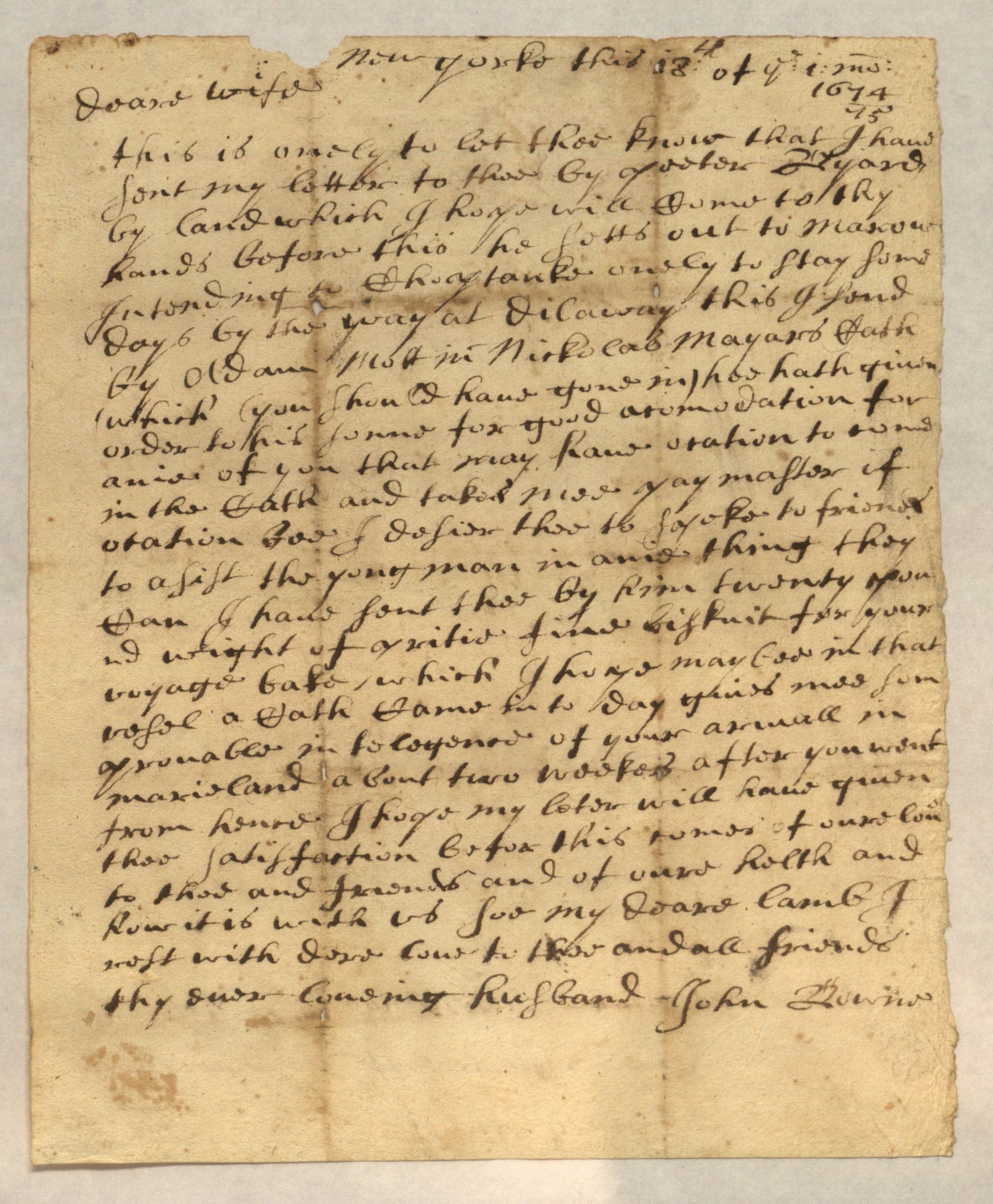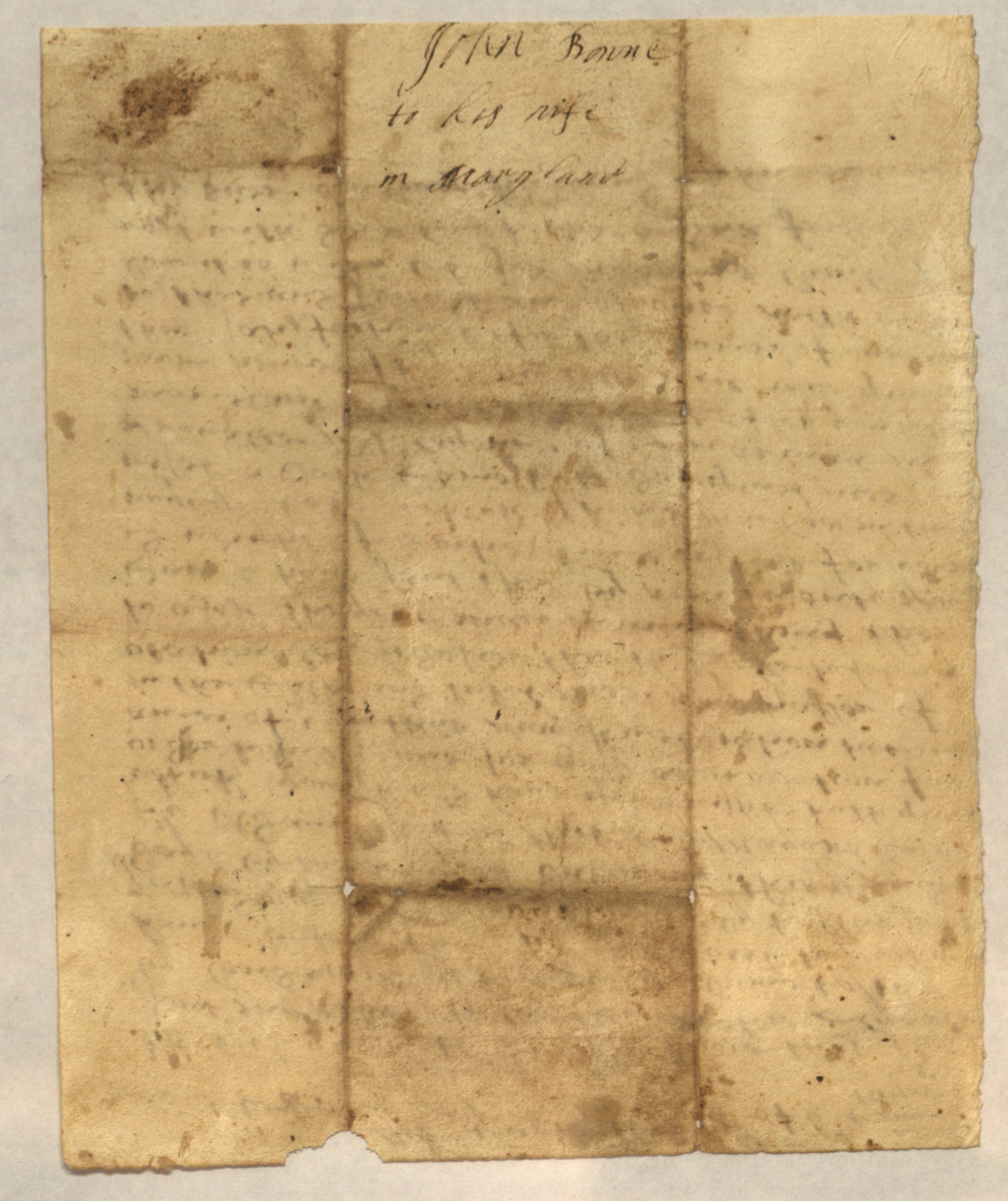TITLE: TESTIMONY OF JOHN BOWNE FOR HANNAH BOWNE FOLLOWING HER BURIAL
DOCUMENT ID: BFP 2018.1.03-09
DATE: 2nd of the 12th month [February] 1677/8 (Old Style)


DESCRIPTION & NOTES
The Testimony, or eulogy, of John Bowne at Hannah Bowne’s memorial service, as recorded by the Quaker Meeting at the Sign of the Peel in St. John’s Street, Clerkenwell, London. Hannah died here at age forty, following an epic preaching tour that took her far from home and family to preach in the British Isles and through the Low Countries as far as Emben in present-day German, both in English and the Dutch learned in her childhood. Most of what we know about Hannah’s life and her remarkable relationship with John Bowne comes from this deeply moving account.
















